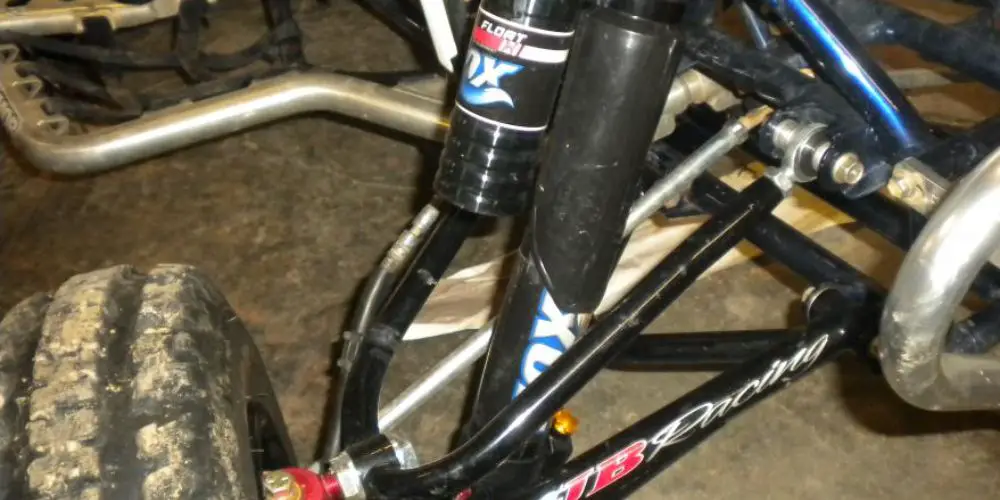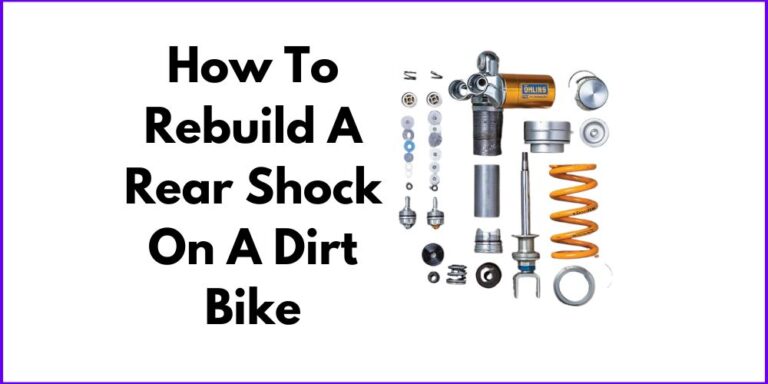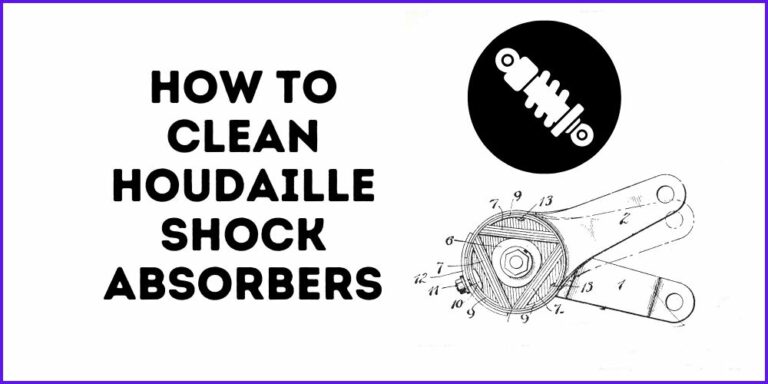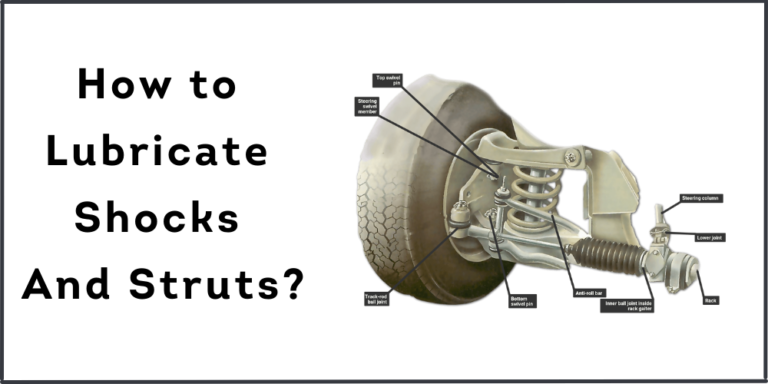Properly adjusted shocks are vital for achieving optimal performance on your ATV. Air Fox shocks, known for their advanced technology and customizable features, can significantly enhance your off-road experience. In this blog post, we will provide a step-by-step guide on how to adjust your air fox shocks on an ATV. By the end, you’ll have the knowledge and confidence to fine-tune your shocks for smoother rides on any terrain. So, let’s dive in and discover how to adjust your Air Fox shocks to take your ATV adventures to new heights!
How To Adjust My Air Fox Shocks On A ATV
Air Fox shocks revolutionize ATV suspension with advanced features and unmatched adjustability. With an air suspension system, these shocks can be tailored to different terrains and riding preferences.

Key Features:
Air Fox shocks are distinguished by their adjustable air pressure, setting them apart from traditional shocks. By manipulating the air pressure, riders can customize the firmness or softness of the shocks to suit their weight, riding style, and terrain conditions. This unique feature allows for precise tuning and optimal suspension performance.
Advantages of Air Suspension
- Customizability: Riders can fine-tune shocks to their preferences, delivering a personalized and comfortable ride.
- Versatility: Air Fox shocks adapt to diverse terrains, optimizing suspension for bumps, jumps, and uneven surfaces.
- Improved Handling: Adjusting the suspension enhances responsiveness, stability, and control on the trail.
- Enhanced Comfort: Air suspension reduces jarring impacts and minimizes fatigue for an enjoyable off-road experience.
However, Air Fox shocks provide ATV riders with unmatched adjustability and performance, thanks to their air suspension system. The next section will detail the step-by-step process for adjusting Air Fox shocks, maximizing your ATV’s potential.
Preparing for Shock Adjustment
Before adjusting your Air Fox shocks, it’s crucial to prioritize safety and gather the necessary tools. Follow these guidelines for a safe and efficient adjustment process:
-
Safety Precautions:
- Wear appropriate safety gear, including gloves, goggles, and sturdy footwear.
- Secure the ATV on a level surface and disconnect the battery.
- Allow the shocks to cool down and consult the owner’s manual for specific instructions.
-
Tools and Equipment:
- Shock pump: Ensure it is compatible with your Air Fox shocks and can handle the required pressure range.
- Wrenches and sockets: Use the appropriate sizes as specified in your ATV’s manual.
- Allen wrenches: Handy for loosening/tightening specific bolts or set screws.
- Jack or lift (if needed): Facilitates access to the shocks.
- Cleaning materials: Cloth or rag and mild detergent for cleaning.
By following safety precautions and having the necessary tools, you’ll be ready to adjust the air pressure and fine-tune your Air Fox shocks, optimizing your ATV’s performance.
Adjusting Air Pressure
Proper air pressure in your ATV’s shocks is of utmost importance for optimal performance. It directly affects how the shocks respond to bumps, impacts, and varying terrains. In this section, we’ll explore the significance of maintaining the right air pressure in your shocks and provide guidelines for recommended air pressure based on rider weight and ATV model. We’ll also walk you through the step-by-step process of adjusting air pressure using a shock pump.
Significance of Proper Air Pressure in the Shocks:
The air pressure in your shocks determines the stiffness and responsiveness of the suspension. Insufficient air pressure can result in a sagging or bottoming-out suspension, leading to a rough and uncomfortable ride. On the other hand, excessive air pressure can make the suspension too firm, causing a harsh ride and reduced traction.
Recommended Air Pressure Guidelines:
The recommended air pressure for your ATV’s shocks depends on various factors, including your weight as a rider and the specific model of your ATV. It’s essential to consult your ATV’s owner’s manual or the manufacturer’s guidelines for the recommended air pressure range. Generally, heavier riders may require higher air pressure to support the additional weight, while lighter riders may need lower air pressure for optimal suspension performance.
Adjusting Air Pressure Using a Shock Pump
To adjust the air pressure in your Air Fox shocks, you’ll need a shock pump, which is a specialized tool designed for this purpose. Here’s a step-by-step guide to help you through the process:
- Start by locating the air valve on your shocks. It’s usually positioned near the top of the shock body and is protected by a cap.
- Remove the cap from the air valve and attach the shock pump’s nozzle securely to the valve.
- Before adding or releasing air, check the current air pressure in the shocks using the pump’s pressure gauge.
- If the pressure needs adjustment, add or release air as necessary. To add air, use the pump to inflate the shocks gradually. To release air, gently press the release valve on the pump to let out small amounts of air at a time.
- Adjust the air pressure incrementally, checking the pressure gauge periodically until you reach the desired pressure within the recommended range.
- Once you’ve achieved the desired air pressure, remove the pump’s nozzle and securely replace the cap on the air valve.
Remember to repeat the process for each shock on your ATV to ensure consistent air pressure across all shocks.
By following these steps, you’ll be able to fine-tune the air pressure in your Air Fox shocks, providing a smoother and more controlled ride tailored to your specific needs and riding conditions.
Next, we’ll delve into the topic of rebound damping adjustment, another critical aspect of optimizing your ATV’s performance. Stay tuned!
Rebound Damping Adjustment
Rebound damping is essential for controlling your ATV’s handling. It regulates how quickly the shocks return to their original position after compressing. Insufficient rebound damping can lead to instability, while excessive damping results in a harsh ride. Air Fox shocks offer adjustable rebound settings to suit your needs:
- Softest Setting: Provides quick shock return, suitable for high-speed riding on smooth terrain.
- Medium Setting: Strikes a balance between speed and stability, ideal for diverse riding conditions.
- Firmest Setting: Slows down shock return, enhancing stability on rough terrains.
To adjust rebound damping:
- Locate the rebound adjustment knob on your Air Fox shocks.
- Start at the manufacturer’s recommended baseline setting (usually the middle position).
- Turn the knob counterclockwise for faster rebound, or clockwise for slower rebound.
- Make incremental adjustments, testing the ride quality after each change.
- Fine-tune the damping to match your riding conditions—increased damping for rough terrain, and decreased damping for smoother surfaces.
By finding the optimal rebound setting, you’ll enjoy improved control, traction, and comfort during your ATV adventures.
Compression Damping Adjustment
Compression damping plays a crucial role in optimizing shock performance for your ATV. With Air Fox shocks, you have the flexibility to fine-tune the compression damping settings to enhance your ATV’s handling and control. Here’s a quick guide to adjusting compression damping on your Air Fox shocks:
- Locate the compression damping adjustment knob on your shocks.
- Start with the recommended baseline setting provided by Air Fox or consult the owner’s manual for guidance.
- To increase compression damping, turn the knob clockwise for a firmer shock, ideal for aggressive riding or rough terrains.
- To decrease compression damping, turn the knob counterclockwise for a softer shock, suitable for lighter riders or smoother terrains.
- Make incremental adjustments, testing the shocks after each adjustment to assess the impact on your ATV’s performance.
Fine-Tuning and Testing
Fine-tuning your shock adjustments is vital to achieving the optimal setup for your ATV. Here are some suggestions to help you fine-tune and test your shock settings:
- Test your ATV’s performance on different terrains, including rough trails, corners, and jumps, to gauge how the shocks respond.
- Pay attention to how your ATV feels during acceleration, braking, and cornering. Make adjustments if you experience excessive bouncing, bottoming out, or a lack of control.
- Keep a record of your adjustments and their effects on your ATV’s performance, allowing you to track progress and revert to previous settings if needed.
- Seek feedback from experienced riders or ATV enthusiasts who have a similar setup or ride in similar conditions.
- Remember that shock adjustment is a personal preference, so don’t be afraid to experiment and find the settings that suit your riding style and terrain preferences.
By fine-tuning your shock adjustments and testing them in various conditions, you’ll discover the optimal configuration that enhances your ATV’s performance and provides a more enjoyable riding experience.
Final Thoughts
In conclusion, adjusting your Air Fox shocks on your ATV is a simple yet effective way to optimize your off-road experience. By adjusting the air pressure and fine-tuning the compression damping settings, you can enhance your ATV’s handling, comfort, and performance.
Regular testing, record-keeping, and seeking feedback from experienced riders are valuable in finding the perfect setup for your specific needs. Properly adjusted shocks offer improved stability, traction, and a smoother ride.
Embrace the opportunity to optimize your ATV’s performance and elevate your off-road adventures by adjusting your Air Fox shocks. Get ready to conquer new trails with confidence and enjoy the thrill of a perfectly tuned ATV!







